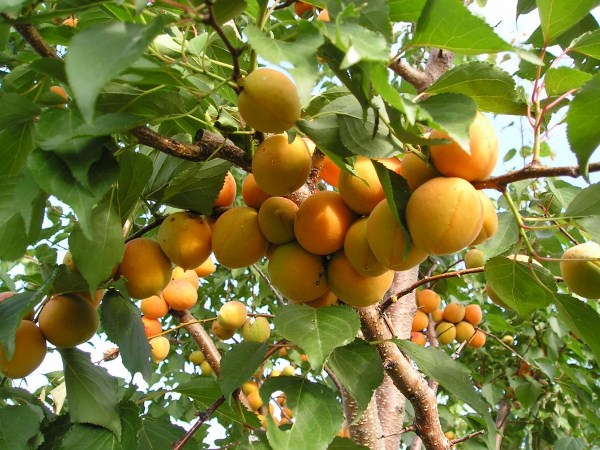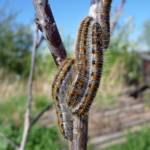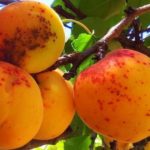Apricot - the old-timers not only the southern edges, he is happy to grow gardeners of the northern regions. This beautiful tree with sunny fruits is appreciated for its simple, though regular care in spring and autumn.
Table of contents
- How to care for apricot in spring, summer and autumn
- Seasonal care
- Protection against diseases and pests
- Why plant apricot?
- Is it possible to plant apricot on cherry plum or plum?
- When can be planted in the Moscow region and other regions?
- How to choose the right stock
- Vaccination methods
- How to plant apricot
- Growing and feeding the tree
How to care for apricot in spring, summer and autumn
Apricot tree needs year-round carewhich involves watering, fertilizing, pruning. But it all starts with the right fit.
Proper planting is the key to future harvests.
For the planting of apricot trees, an elevated site is suitable, protected from cold northern and western winds, with deep-lying groundwater. In the lowlands, where cold air, snow and moisture accumulate, apricot does not survive. Particularly attentive to the place of "residence" of a tree should be turned to Siberian and Ural gardeners: in spring, when thaws alternate with frosts, there is a great danger of moisture accumulation at the trunk and freezing of the root collar.
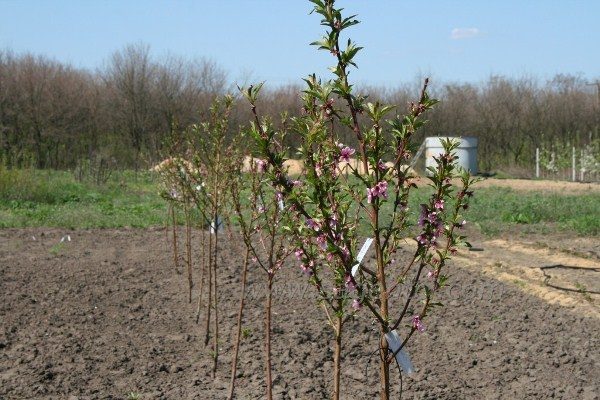
Planting is carried out in the spring, before the swelling of the kidneys. Planting pits are prepared in advance, better - in the fall. Their size in all directions is approximately 70 - 80 cm. If you plan to plant several plants, you should leave about 4 - 5 meters between the pits.
At the bottom of the necessarily poured clay, sand and gravel, or gravel, with a fraction of medium size.This “cushion” is necessary to ensure good drainage.
Pour out 1,5 - 2 buckets rotted manure or humus. Then make mineral fertilizers - potash, phosphate, nitrogen, can be in the complex. You can add 0.5 - 1 kg of wood ash and 1 kg of superphosphate. It is important not to overdo it: apricot better tolerate a lack of fertilizer than their excess. On top of the fertilizer will certainly fill the ground to protect the young growth from burns.
For planting choose seedlings - one year old with a well-developed intact root system., spike (penechki from the stock), several strong branches, spaced evenly, forming approximately 45 angles with the stem0.
Next to the seedling, a peg-support is added in a planting hole. Later, a planted branch is attached to it so that the tree grows vertically and an even trunk is formed.
The seedling is lowered into the pit, straighten the roots and sprinkle with soil, gradually and gently priminaya soil. The root neck should be flush with the ground. After that, a circular groove is arranged on the edge of the pit and 15 to 20 liters of water are poured.
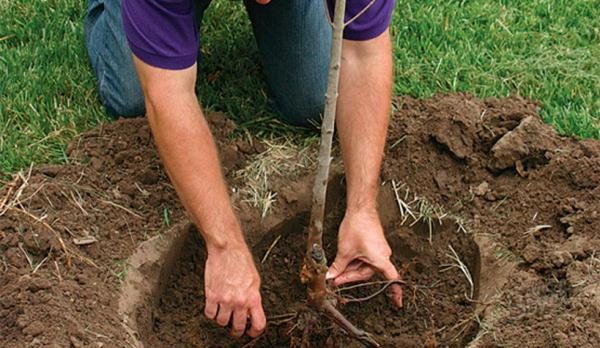
Immediately after landing, the shoot is pruned to 40 cm above the ground. After 5-7 days, the twig is carefully tied to a support.
Seasonal care
Schematically, apricot seasonal care looks like this.:
- Spring - pruning, cleaning frost damage and sealing garden pitch, whitewashing the trunk and skeletal branches, feeding, watering.
- Summer - watering, protection from diseases and pests, in adult plants - support of branches, weighted with the future harvest.
- Autumn - re-treatment with lime stump and skeletal branches, feeding, preparation for winter.
Pruning
Apricot tree pruning is done in spring. Delete:
- short generative annual shoots;
- branches growing outside or inside the crown;
- weak and thickening growth.
Thus, the crown is thinned,provide sufficient uniform illumination and stimulate the growth of fruit-bearing branches.
Usually, form sparse-tier crown with 7-8 branches first order. Less often - in the form of a flattened bowl on top, such a crown contributes to the early harvest of healthy fruits. If planting is located against the wall, form fan crowns, cutting off the side shoots.

In "kids" 2-4 years pruned excess and abnormally growing annual shoots. In the following 2-3 years branches are shortened by about a third and thinned, forming a crown. Further yearly pruned to 30 % the length of the fruit-bearing branches. They remove old (no longer fruiting), dried, crooked, broken, excessively thickening young shoots.
When slowing or stopping annual growths, anti-aging pruning is required.
Watering
Apricot is contraindicated stagnant water at the roots. This is fraught with their rotting and death of the tree. At the same time, the plant suffers during dry periods from lack of moisture in the soil and air. An adult plant needs to be watered no less than 4 times during the season, in the summer months - more often.
Before flowering, they spill profusely for the first time, stimulating abundant flowering. Re-watered after flowering, it has a beneficial effect on the appearance of a large number of ovaries and young shoots.
The third watering is needed for the development and formation of large fruits.with high taste. Then watered if necessary, not allowing drying. But since August the tree begins to prepare for rest, the intensity of irrigation is reduced.
Autumn and pre-winter wetting is not required and even contraindicated.. The exception is when the ground is dry and the groundwater level is significantly lower than the root system of the tree.
Preparing for the winter
In the traditional latitudes, the suburbs of the growth of apricot has proven itself to be a hardy winterer. But, fresh saplings and young trees, especially in harsh lands, need warming.
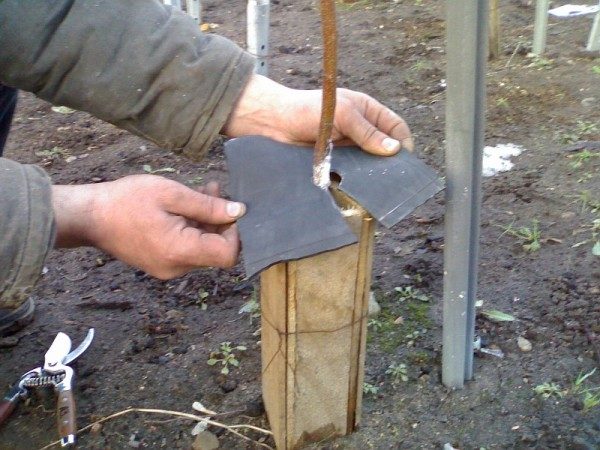
Annual plantings are insulated with branches, spruce branches, reeds, fixing everything on the frame. Grown up trees spud, and trunks (shtaby) wrapped, for example, burlap.
Protection against diseases and pests
Apricot Pests
Aphid, caterpillars hawthorn, black goldfish - these are the main "enemies" of this gardener.
- Against aphids use dandelion, ash and tobacco infusions. They are sprayed on the affected and nearby trees. If the aphids are small, it can be destroyed mechanically, with abundant reproduction of the aphids, it is better to remove the leaves and burn them.
- With butterfly caterpillars also fight mechanically.
- The larva of black goldfish, settled in the root system, is capable of destroying an adult plant. Prevention of the appearance of the pest is the autumn processing of the branches, trunk and the trunk circle with Bordeaux fluid.
- Caterpillar Hawthorn on apricot
- The larva of black goldfish
Diseases
Apricots, like other fruit trees, are susceptible to viral, fungal and bacterial diseases:
- Apricot viral diseases - ring "smallpox", viral wilting, apricot mosaic.
- Fungal - cytosporosis, gray fruit rot, rust.
- Apricot struck fruit rot
- Ring pox on apricot fruits
- Rust on apricot fruit
- Cytosporosis on apricot
Pathogens are carried on the hands of a gardener or with garden tools. therefore the main task of prevention - the use of extremely clean tools for various jobs associated with vaccinations, trimmings, treatments. Tools need to be washed and decontaminated.
Why plant apricot?
Fruit trees propagated by grafting in order to obtain seedlings with improved varietal qualities.
Southern species, such as apricots, are grafted onto those that are adapted to the harsh conditions to increase the stability of the southerners to a colder climate.
Is it possible to plant apricot on cherry plum or plum?
For stock you need to choose a healthy strong tree from the age of 3-6 years oldwith a barrel 3-9 cm in diameter. Apricot is better to graft on the stock stone fruit.
- Popular use of cherry plum. The graft easily takes root, and cherry plum sweetness is transmitted to the fruits.
- Plum is considered a good stock. The cuttings “do not conflict” and quickly grow together, the tree grows hardy, and there is no growth on the inoculation site.
- On the turn, but better on the dredger, apricot grafts are planted close to the root neck - to reduce the number of root shoots.
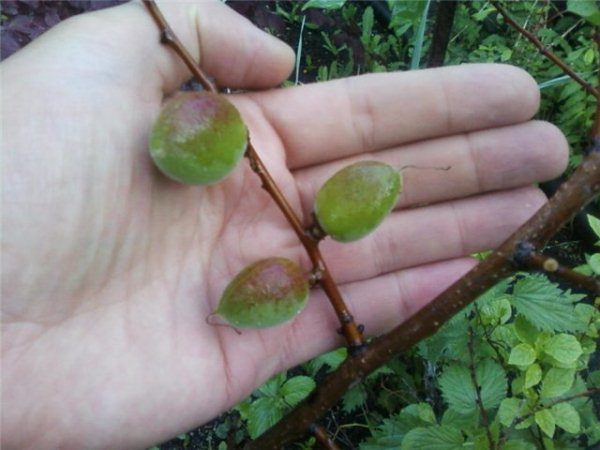
- Peach is also used for grafting., but the survival rate is worse than plum and cherry plum, and this option is suitable only for the southern regions.
- On cherry rarely vaccinated, because then you have to strengthen weak fragile branches.
But the best stock for apricot cutting another apricot remains.
When can be planted in the Moscow region and other regions?
You can plant apricot from spring to autumn. It is important that the weather is dry and warm and the sun is hiding behind the clouds.
Spring vaccinations give the best result.. During active sap flow, the cuttings easily grow together and have time to grow stronger over the summer.
Vaccination in warm summer is also a good time.. There is plenty of time for accretion, especially under long favorable conditions.
In the autumn in the warm season You can try to graft the stalk. But there is a high risk of frost before the graft grows together with the stock and will get stronger. Such cuttings die.
How to choose the right stock
The basis for grafting and the future of the tree is a stock.From it, the plant inherits fertility, resistance to difficult environmental conditions, longevity.
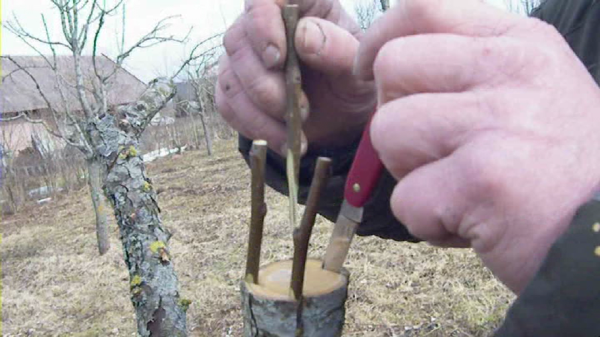
Therefore, for an apricot cutting it is important to choose a stock:
- compatible with a scion, resistant to cold;
- undemanding to soil moisture conditions;
- adapted to local climatic features;
- possessing powerful developed root system,
- not weakened and not infected pests or microorganisms, only a healthy plant.
There are stocks of cultural, wild, weak and vigorous, vegetative and seed.
For the stock, choose a specially grown tree, wild growth, a broken tree, or simply an unsuccessful variety / specimen.
Vaccination methods
Basic Apricot Grafting Techniques:
- behind the bark;
- in a side cut;
- in cleft;
- budding;
- improved cupping.
How to plant apricot
Scion shoots are cut at the end of autumn. Do not use thin, sick, weak branches. Wrapped in film, left for the winter in the snow or stored in the basement in a cold humid environment. - sawdust, shavings, sand, peat, rags. Before vaccination soaked.
At all stages use extremely clean, decontaminated sharp instrument.
Graft Splitting
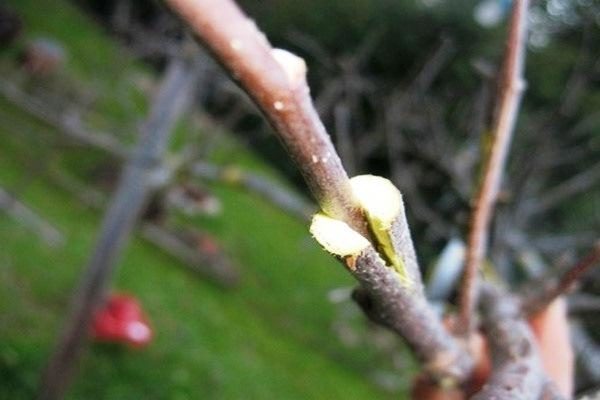
They slit a tree; in the center they make a small shallow cleft. The scion is tightly fixed into it. This method is used if the graft is significantly thinner than the stock..
Kupulirovka
For stocking suitable stock and graft of equal diameter. Sections of cuttings tightly interconnected and secured. This vaccine looks like a single stem.
Vaccination for the bark
For grafting, the bark is incised and slightly bred (like a clasp). The graft is inserted into the incision, the bark is “closed” and tightly wrapped..
Growing and feeding the tree
As we said above, you need to take care of apricot. Like other plants, fruit apricot needs top dressing with basic mineral fertilizers - phosphoric, nitrogenous, potash.
- Under the young trees in the spring, 50-70g of ammonium nitrate is introduced, in the fall, a bucket of humus, compost or manure, about 140g of superphosphate 35g of potassium chloride.
- Apricots 4-5 years “Feed” double servings of fertilizers.
- In 6-8 years the rate is still slightly increased, and 10-year-old trees need 8-9 buckets of organic matter, 250 g of potash, 900 g of phosphate and 400 g of nitrogen fertilizer.
Early-autumn spraying crown a weak solution of nitrogen fertilizer will improve flowering next spring and increase the number of ovaries.
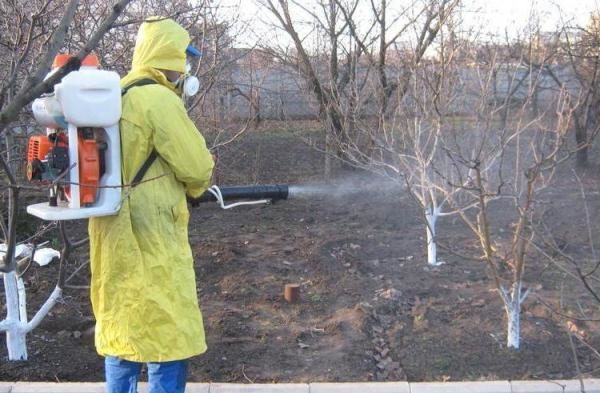
Apricots require a special approach. In the spring they need to be fed with trace elements.: sprayed with iron fertilizers, solutions of manganese sulphate and boric acid.
Apricot requires the attention of a grower. But it pays for the care of abundant crops, which can please the tree for the fifth year of its life.. And every summer it smells of juicy sunny yellow apricot happiness.
